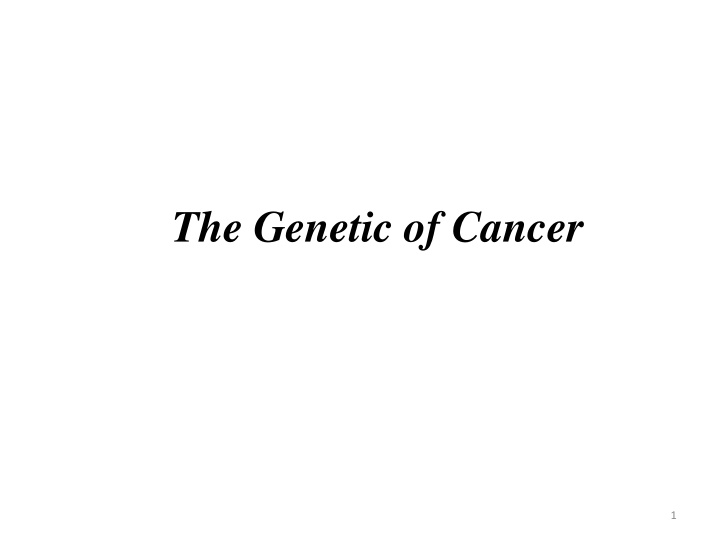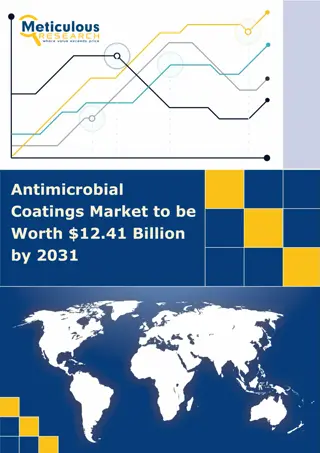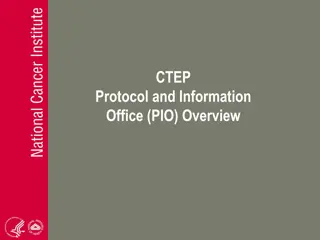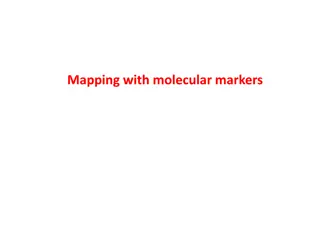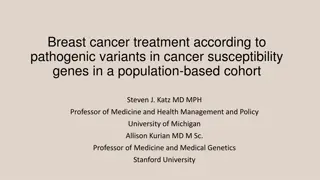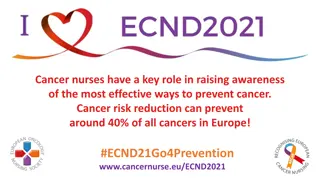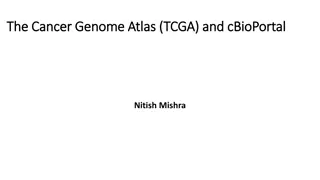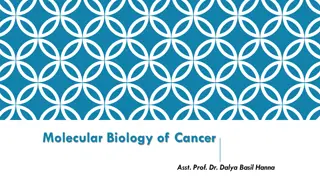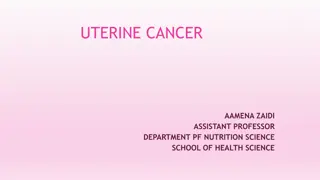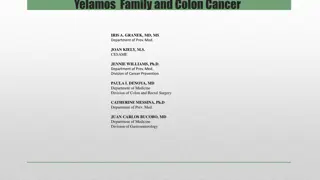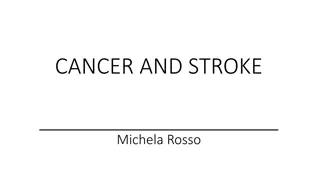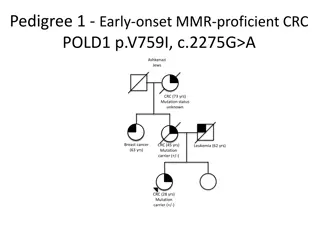The Genetic of Cancer
In this informative content, you will delve into the genetic aspects of cancer, exploring its classification by tissue type, cell type, and site of origin. Learn about benign and malignant tumors, as well as the types of agents that may mutate to cause cancer. Discover the role of tumor suppressor genes in regulating cell division and the impact of mutations on gene activity.
Download Presentation

Please find below an Image/Link to download the presentation.
The content on the website is provided AS IS for your information and personal use only. It may not be sold, licensed, or shared on other websites without obtaining consent from the author.If you encounter any issues during the download, it is possible that the publisher has removed the file from their server.
You are allowed to download the files provided on this website for personal or commercial use, subject to the condition that they are used lawfully. All files are the property of their respective owners.
The content on the website is provided AS IS for your information and personal use only. It may not be sold, licensed, or shared on other websites without obtaining consent from the author.
E N D
Presentation Transcript
Cancer terminology Classification by tissue type: carcinoma epithelial cell 90% of all tumours derived from ectoderm (mostly) or endoderm (some) sarcoma connective tissue 2% of all tumours derived from mesoderm leukaemia circulatory or lymphatic 8% of all tumours derived from mesoderm Classification by the type of cells: Adenomatous cells Squamous cells flat cells Myeloid blood cell Lymphoid lymphocytes or macrophages 3
Cancer terminology Classification by the site of origin of the tumour: Breast: carcinoma of ductal, papillary, etc. cells Lung:small cell, squamous, large cell carcinomas Bone: osteosarcoma Eye: retinoblastoma Lip, tongue, mouth, nasal cavity: squamous cell carcinoma Lymphocytes: acute lymphocytic leukaemia, chronic lymphocytic leukaemia, Hodgkin's lymphoma Ovary: adenocarcinoma Testis:seminoma, teratocarcinoma, 4
Cancer terminology Benign tumours are generally slow growing and enclosed in a fibrous capsule are relatively innocuous, although their location can make them serious (such as a tumour located in the brain) Malignant tumours proliferate rapidly, invading neighbouring tissues can metastasise, or spread, to other sites of the body are named using the conventions of tissue, cell type, and origin add OMA e.g. A tumour of the bone is an osteoma if benign and an osteosarcoma if malignant 5
Types of agents which may mutate to cause cancer: Environmental agents Genetical agents Tumour suppressor genes oncogenes DNA repair genes p53 6
Tumour suppressor genes The gene s normal function is to regulate cell division. Both alleles need to be mutated or removed in order to lose the gene activity. The first mutation may be inherited or somatic. The second mutation will often be a gross event. 9
Tumor suppressor genes are usefully placed into two general groups, promoters promoters and caretakers caretakers. Promoters Promoters are the traditional tumor suppressor genes, such as RB or p53, where mutation of the gene leads to transformation by releasing the brakes on cellular proliferation. Caretaker Caretaker genes are responsible for processes that ensure the integrity of the genome, such as DNA repair. 10
retinoblastoma Retinoblastoma (RB) is a malignant tumor of the developing retina that occurs in children, usually before the age of five years. All forms of retinoblastoma represent a mutation in the gene RB1 located in in the region 13q14.1-q14.2. The gene is about 180 kb in length with 27 exons that code for a transcript of only 4.7 kb. 12
RB1 Is regulated by phosphorylation by Cdk2 Hypophosphorylated form binds and sequesters E2F (and viral proteins such as E7 from human papilloma virus-16) 13
Types of proto-oncogene Growth factor e.g. SIS oncogene (PDGF) 15
Mutant Ras Protein Single amino acid changes create N-ras and K-ras variants 17
